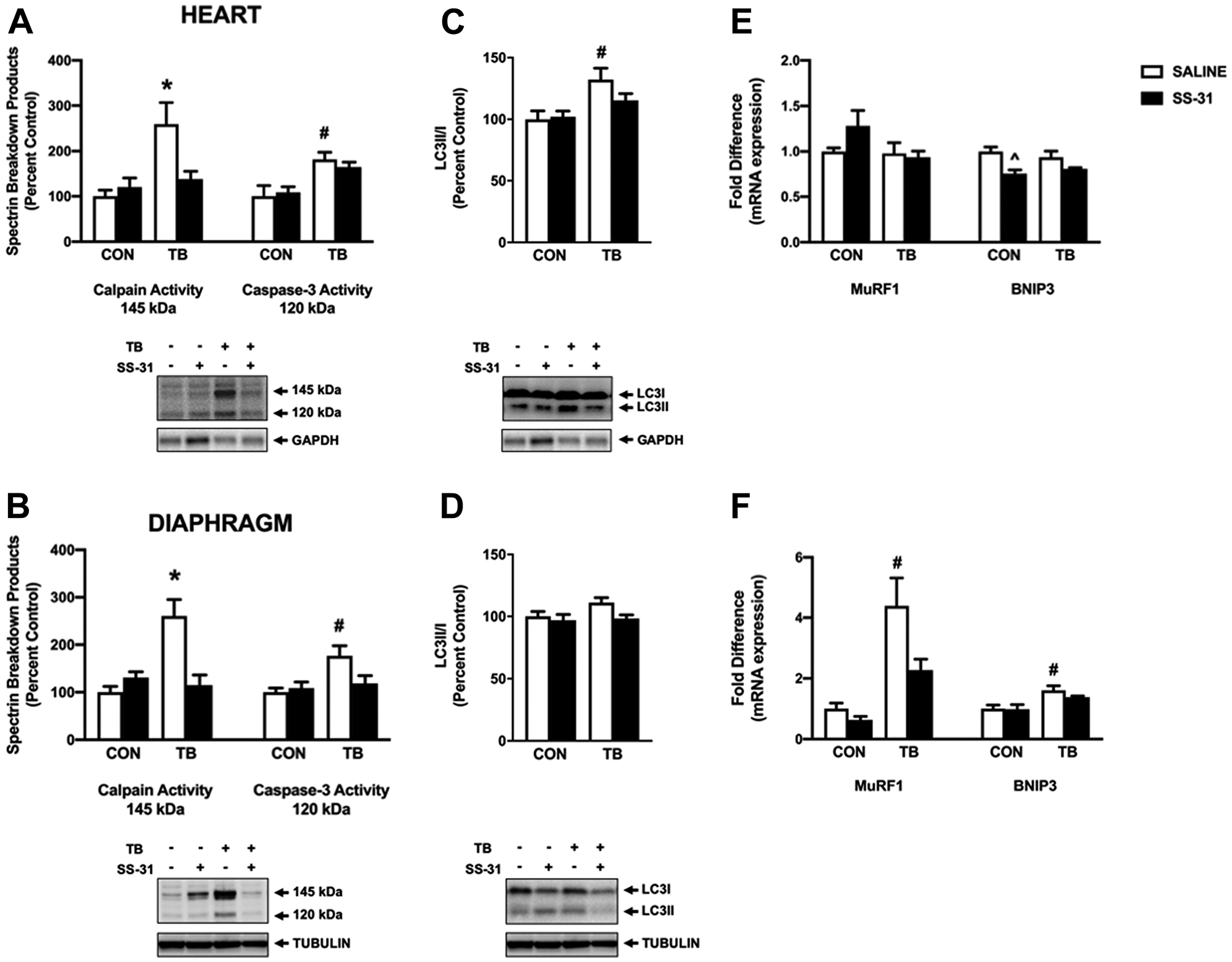Oncotarget recently published "Pharmacological targeting of mitochondrial function and reactive oxygen species production prevents colon 26 cancer-induced cardiorespiratory muscle weakness" which reported, that to determine if pharmacologically targeting mitochondrial dysfunction via treatment with the mitochondria-targeting peptide SS-31 would prevent cardiorespiratory muscle dysfunction, colon 26 adenocarcinoma tumor-bearing mice were administered either saline or SS-31 daily following inoculation.
C26 mice treated with saline demonstrated greater ROS production and mitochondrial uncoupling compared to C26 mice receiving SS-31 in both the heart and diaphragm muscle.
In addition, saline-treated C26 mice exhibited a decline in left ventricular function which was significantly rescued in C26 mice treated with SS-31. In the diaphragm, muscle fiber cross-sectional area of C26 mice treated with saline was significantly reduced and force production was impaired compared to C26, SS-31-treated animals.
Finally, ventilatory deficits were also attenuated in C26 mice treated with SS-31, compared to saline treatment.
These data demonstrate that C26 tumors promote severe cardiac and respiratory myopathy, and that prevention of mitochondrial dysfunction is sufficient to preclude cancer cachexia-induced cardiorespiratory dysfunction.
Dr. Ashley J. Smuder from The University of Florida said, "Cachexia is a debilitating consequence of cancer, most prevalent in patients with gastrointestinal, pancreatic, lung and colorectal cancers."
The Oncotarget authors indicated that, indeed, body weight loss in individuals with cancer cachexia is accompanied by cardiac muscle wasting and significant inspiratory muscle weakness, which often present initially as fatigue, shortness of breath and exercise intolerance, but can compromise survival by advancing into ventilatory and/or heart failure.
In fact, impaired mitochondrial function was demonstrated to precede the development of cachexia in Lewis lung carcinoma tumor-bearing mice, which supports the premise that mitochondrial dysfunction may be critical to the development of cancer cachexia.
"Mitochondrial dysfunction may be critical to the development of cancer cachexia."
Importantly, the early development of mitochondrial dysfunction promotes mitochondrial ROS production and the oxidation of muscle contractile proteins which upregulates the activation of proteolytic pathways and accelerates muscle protein breakdown, leading to disruption of muscle contractile properties and muscle wasting.
Therefore, targeting early changes in mitochondrial function and ROS production could be instrumental in preserving cardiac and skeletal muscle mass and function.
Preclinical investigation into the efficacy of SS-31 administration for the preservation of mitochondrial function during conditions that promote cardiac and diaphragm muscle weakness has revealed a significant interaction between mitochondrial dysfunction and muscle weakness.
The Smuder Research Team concluded in their Oncotarget Research Paper that specifically, inflammatory cytokines released from the tumor, or from the host in response to the tumor, may engage their receptors on muscle cells and disrupt oxidative metabolism, proteostasis and/or muscle function.

Figure 6: Markers of proteolytic activity. Western blot analysis of the calpain (145 kDa) and caspase-3 (120 kDa)-specific spectrin breakdown product in (A) heart and (B) diaphragm for control (CON) and tumor-bearing (TB) mice treated with saline (SALINE) or SS-31. Western blot analysis of LC3II/LC3I in (C) heart and (D) diaphragm for control (CON) and tumor-bearing (TB) mice treated with saline (SALINE) or SS-31. Gene expression of MuRF1 and BNIP3 in (E) heart and (F) diaphragm for control (CON) and tumor-bearing (TB) mice treated with saline (SALINE) or SS-31. Values are represented as means ± SEM. Representative western blot images are shown below the graphs. *significantly different versus all groups (p < 0.05); #significantly different versus CON-SALINE and CON-SS-31 (p < 0.05).
However, a recent investigation into the factors driving cachexia-induced skeletal muscle function by VanderVeen et al. showed that increased muscle fatigue and decrements in mitochondrial biogenesis and content preceded development of cachexia in ApcMin/ mice.
Additionally, no relationship was found between systemic IL-6 levels and muscle fatigue.
These findings were supported in the C26 mice treated with SS-31, as the preservation of both muscle and mitochondrial function was not associated with attenuated plasma IL-6 levels.
Sign up for free Altmetric alerts about this article
DOI - https://doi.org/10.18632/oncotarget.27748
Full text - https://www.oncotarget.com/article/27748/text/
Correspondence to - Ashley J. Smuder - [email protected]
Keywords - diaphragm, cachexia, heart, SS-31, elamipretide
About Oncotarget
Oncotarget is a biweekly, peer-reviewed, open access biomedical journal covering research on all aspects of oncology.
To learn more about Oncotarget, please visit https://www.oncotarget.com or connect with:
SoundCloud - https://soundcloud.com/oncotarget
Facebook - https://www.facebook.com/Oncotarget/
Twitter - https://twitter.com/oncotarget
LinkedIn - https://www.linkedin.com/company/oncotarget
Pinterest - https://www.pinterest.com/oncotarget/
Reddit - https://www.reddit.com/user/Oncotarget/
Oncotarget is published by Impact Journals, LLC please visit http://www.ImpactJournals.com or connect with @ImpactJrnls
Media Contact
[email protected]
18009220957x105



